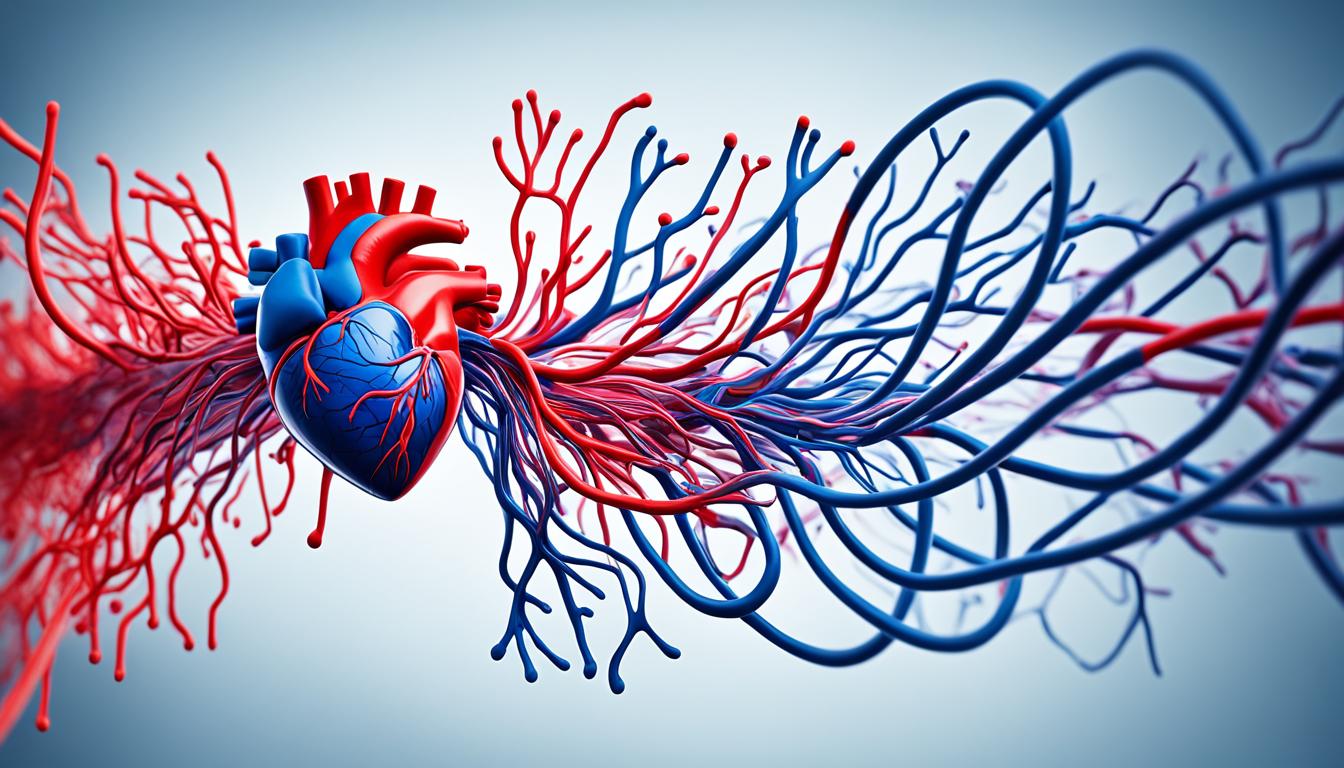Transposition of Great Vessels (TGV) is a heart problem someone is born with. It makes the arteries in the heart switch places. This changes how blood flows and can cause a blue look, fast breathing, not eating well, and slow growth.
The true cause of TGV is not clear. We think it comes from both genes and things in the environment. Doctors often use heart scans to see the problem and how blood moves.
Treating TGV usually means having a surgery where doctors put the arteries back in their right places. This surgery is called an arterial switch. Thanks to better treatments, more people survive and live better lives after having TGV surgery.
Recently, scientists are excited about using special cells, called stem cells, to potentially help fix TGV and other heart issues.
Key Takeaways:
- Transposition of Great Vessels (TGV) is a heart birth defect with the arteries in the wrong places.
- TGV makes blood flow differently and can show as a blue tint, quick breaths, not eating much, and slow growing.
- Doctors use heart tests to find and understand TGV.
- The main way to treat TGV is with a surgery to switch the arteries back.
- Stem cell therapy is being looked at as a new way to help with TGV and other heart issues.
Stem Cell Therapy for Transposition of Great Vessels
Stem cell therapy offers hope for treating transposition of great vessels (TGV) and other heart defects. Studies show various stem cell types can become heart cells and tissue. This promotes heart regeneration and repair. Tissue engineering methods with stem cells and materials also aim to help new heart tissue grow. This could improve the heart’s function and outcomes for those with TGV.
Stem cell therapy for TGV is still in early research phases. Yet, the results look promising for new treatment possibilities. This method uses stem cells to fix or replace damaged heart tissue. It could boost heart function, lower symptoms, and raise the quality of life for TGV patients.
A big advantage of stem cell therapy is creating heart cells unique to each patient. This personalized method meets individual needs, which can lead to better results and less rejection. By using the patient’s own or donor cells, a treatment plan tailored to their genetic traits is possible.
Scientists are also looking into using materials that help stem cells survive and blend with heart tissue. These materials support stem cell growth and act like the heart’s own structure, making cell attachment easier. This can foster heart tissue renewal.
Stem cell therapy might not just help the heart, but also slow down or stop future heart issues. By boosting the heart’s natural repair, future heart surgeries might be avoided. This is a big step in treating TGV and similar heart problems.
Even though there’s more to learn, stem cell therapy brings a new dawn for TGV patients. Progress in heart tissue engineering, regeneration, and stem cell studies suggest a hopeful path forward for treating TGV.
| Advantages of Stem Cell Therapy for TGV | Challenges in Stem Cell Therapy for TGV |
|---|---|
|
|
Future Directions and Challenges in the Treatment of Transposition of Great Vessels
The future of treating transposition of great vessels (TGV) looks promising. There’s a lot of potential in personalized medicine and regenerative therapies. By understanding the genetics and identifying specific mutations, researchers can make treatments just for each patient. This could change how we treat TGV and make outcomes better.
Still, there are hurdles to these new directions. Getting enough donor cells is hard and slows down using regenerative medicine. Stem cell therapy offers hope, but we need to make sure it’s safe and works through big clinical trials. This is vital to move forward.
We also need to look closely at what happens after TGV surgeries or stem cell treatments. Studying these long-term effects will help us know if they really help without causing other problems. We can learn a lot from this kind of research.
Working together, experts in pediatric cardiology and regenerative medicine can achieve a lot. Their joint efforts in research and innovation could make personalized medicine and regenerative therapies the norm. This would greatly improve the lives of TGV patients, offering them better options and outcomes.

